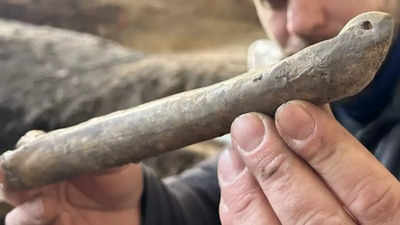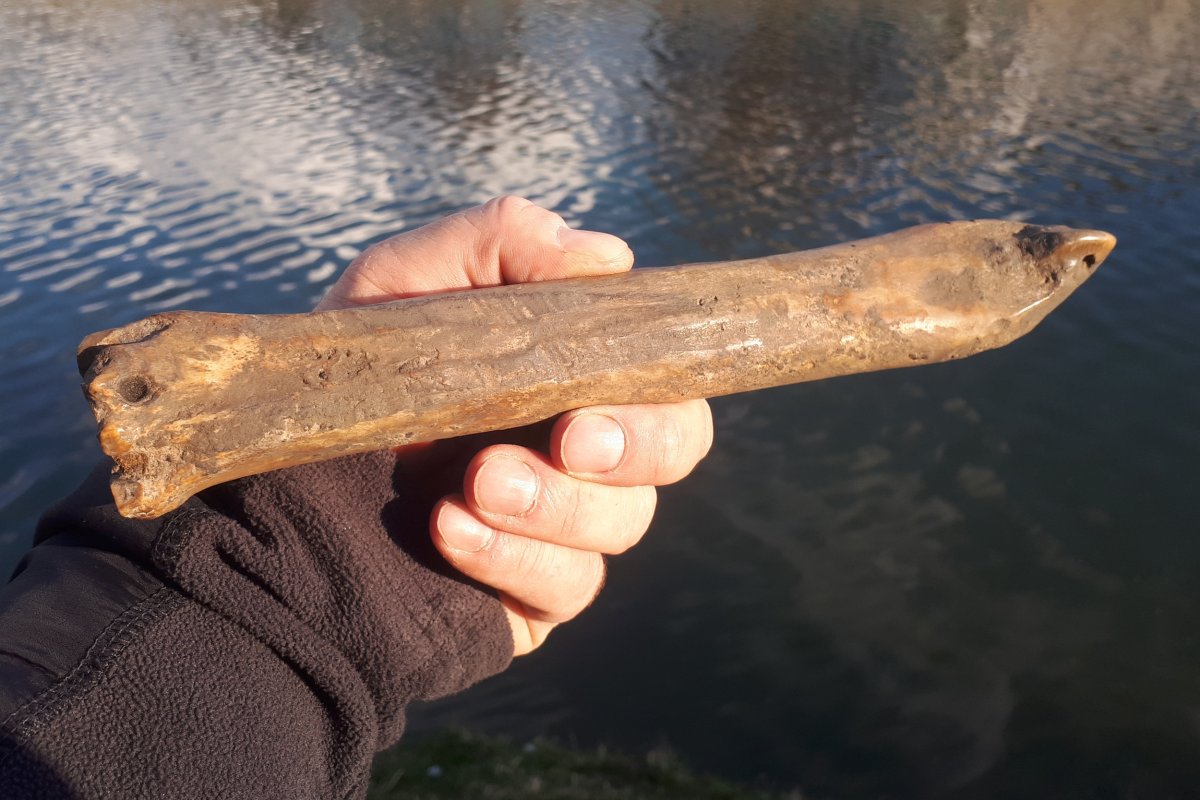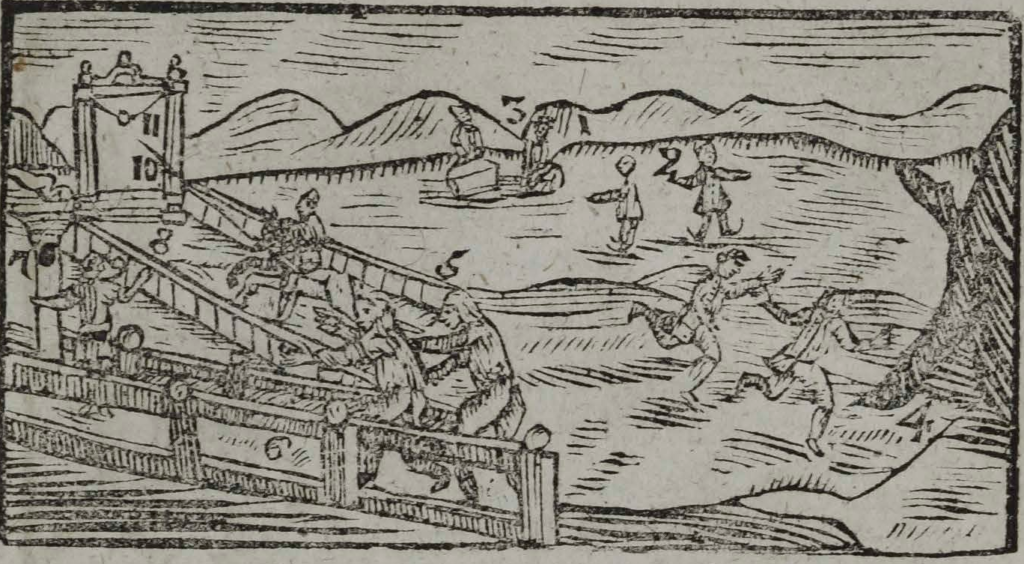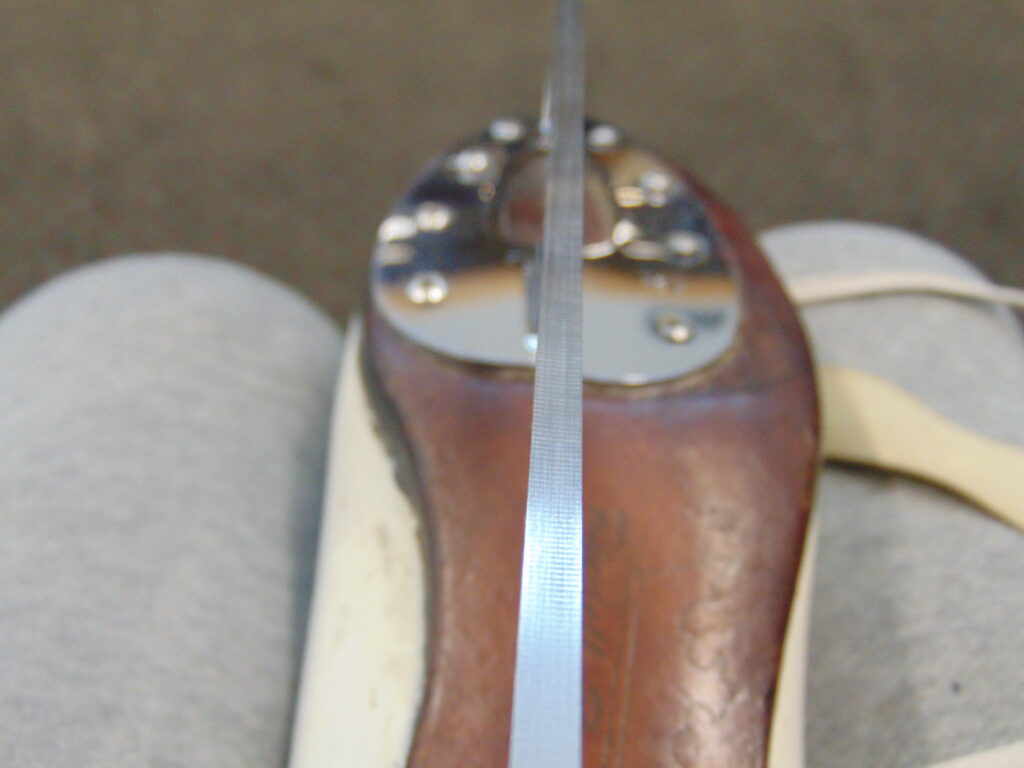James Thomson’s The Seasons was a collection of four poems, one for each season, published in the eighteenth century. Since this blog is about skating, we’re interested in Winter.
Winter was the first season to be published, in 1726. At that point it didn’t have any skating in it. That version is available from ECCO TCP.
The full collection was published in 1730. That version, available in Google books, does mention skating:
On blithesome frolicks bent, the youthful swains,
While every work of man is laid at rest,
Fond o’er the river rush, and shuddering view
The doubtful deeps below. Or where the lake
And long canal the cerule plain extend,
The city pours forth her thousands, swarming all,
From every quarter: and, with him who slides;
Or sketing [sic] sweeps, swift as the winds, along,
In circling poise; or else disorder’d falls,
His feet, illuded, sprawling to the sky,
While the laugh rages round; from end to end,
Encreasing still, resounds the crowded scene.
Thomson, The Seasons (1730), lines 718–729
Skating is spelled “sketing” in the main text, but an erratum corrects it to “skating”. This is corrected, and the passage reprinted, in the 1735 edition.
In the 1744 edition, we finally get the version Jones quotes:
On blithsome Frolicks bent, the youthful Swains
While every Work of Man is laid at rest,
Fond o’er the River croud, in various Sport
And Revelry dissolv’d; where mixing glad,
Happiest of all the Train! the raptur’d Boy
Lashes the whirling Top. Or, where the Rhine
Branch’d out in many a long Canal extends,
From every Province swarming, void of Care,
Batavia rushes forth; and as they sweep,
On sounding Skates, a thousand different Ways,
In circling Poise, swift as the Winds, along,
The then gay Land is madden’d all to Joy.
Nor less the northern Courts, wide o’er the Snow,
Pour a new Pomp. Eager, on rapid Sleds,
Their vigorous Youth in bold Contention wheel
The long-resounding Course. Mean-time, to raise
The manly Strife, with highly-blooming Charms,
Flush’d by the Season, Scandinavia‘s Dames,
Or Russia‘s buxom Daughters glow around.
Thomson, The Works of James Thomson, vol. 1 (1750), Winter, lines 763–781. (Text matches the 1744 edition.)
In grad school I learned that all the interesting research questions in philology have already been answered by nineteenth-century German guys. This one is no exception. Otto Zippel wrote his dissertation on the textual history of Winter. The next year, he published a critical edition of the Seasons “together with all the various readings of the later editions” (1908, v). Skating first appears in his C text; the 1744 edition is his E text.
References
Otto Zippel. 1907. Entstehungs- und Entwicklungsgeschichte von Thomsons “Winter”. Nebst historisch-kritischer Ausgabe der “Seasons”. PhD dissertation, Friedrich-Wilhelms-Universität zu Berlin. Part 1
Otto Zippel. 1908. Thomson’s Seasons: Critical Edition. Berlin: Mayer & Müller.











